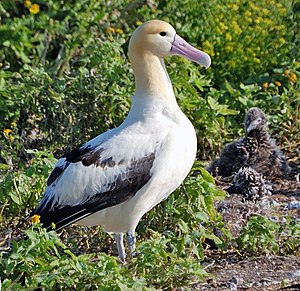ATTWATER'S PRAIRIE CHICKEN
by Hailey Westphal
http://attwater.org/wp-content/uploads/2012/10/blog.jpg

ecos.fws.gov/docs/recovery_plan/100426.pdf
http://wdfw.wa.gov/conservation/research/projects/grouse/graphics/attwater_prairie-chicken.jpg
The
APC is
usually around “17 to 18 inches long and weigh roughly 1.5 to 2 pounds”
(Wikipedia). The species is r-selected and has a diverse diet consisting of leaves,
seeds, and insects (Wikipedia). The
APC’s physical features include patterned feathers with intricate brown and white stripes, leading
all the way down to a darker brown tail (sometimes containing a red-ish tint). Both
males and females have similar patterned feathers, though the females have a
slightly thinner neck and build overall. The most distinct markings lie
on the males, having large orange air sacs on the sides of their necks. These
sacs are partially hidden, unless the male is performing a mating ritual. Rituals
are performed in areas with short grass, surrounded by taller grass, called booming
grounds (Wikipedia). During these unique mating rituals, the male’s orange sacs
are completely revealed as the feathers covering them are raised straight
upright, almost resembling ears. The APC then begins to stamp his feet quickly,
spin around, and puff out his feathers while letting out a squawking noise. (See
video below)
The Attwater’s Prairie Chicken habitat consists of “moderately grazed and moderately burned grassland” (Bergan, 11). However, the grassland must be “well-drained and support some weeds or shrubs, with cover that varies in density from light to heavy; and with supplies of surface water available in summer” (Bergan, iv). Additionally, this large amount of factors requires a broad spatial range of “multiple areas greater than 25,000 acres” (Bergan, v) in order to maintain species security, mating rituals, and proper gene flow. Because the species relies on many varying habitat elements for survival, the APC is especially susceptible to population shortages. “Loss of its prairie grassland habitat was the primary cause for the APC decline” (Bergan, 5). In addition, “Severe droughts along the lower Texas coast and the Rio Grande River plain limited establishment of long-term populations” (Bergan, 5). As populations become more and more scarce, inbreeding and disease is developing into a fear as well (Bergan, 44).
The current
recovery plan involves three primary actions: habitat management, captive and
wild population management, and public outreach (Bergan, 46-48). Currently,
‘wild populations are dependent upon releases of captive-raised birds; however,
the captive management program faces problems surrounding disease and limited
space’ (Bergan, 47). Therefore, priorities revolve around the goal to “raise
the population size to 6,000 breeding adults over a 10-year period while
occupying approximately 300,000 acres” (Bergan, 48) by primarily focusing on
habitat restoration.
WORKS CITED
Bergan, Jim, Mike Morrow, and Terry Rossignol. "ATTWATER’S PRAIRIE-CHICKEN." (n.d.): 1-116. US Fish and Wildlife Service. Web. 8 Mar. 2015. http://ecos.fws.gov/ecos/home.action.
"Birds - Attwater's Prairie Chicken" The Nature Conservancy. N.p., n.d. Web. 13 Mar. 2015. http://www.nature.org/
Wikipedia. "Attwater's Prairie Chicken." Wikipedia. Wikimedia Foundation, n.d. Web. 7 Mar. 2015.
WORKS CITED
Bergan, Jim, Mike Morrow, and Terry Rossignol. "ATTWATER’S PRAIRIE-CHICKEN." (n.d.): 1-116. US Fish and Wildlife Service. Web. 8 Mar. 2015. http://ecos.fws.gov/ecos/home.action.
"Birds - Attwater's Prairie Chicken" The Nature Conservancy. N.p., n.d. Web. 13 Mar. 2015. http://www.nature.org/
Wikipedia. "Attwater's Prairie Chicken." Wikipedia. Wikimedia Foundation, n.d. Web. 7 Mar. 2015.




















